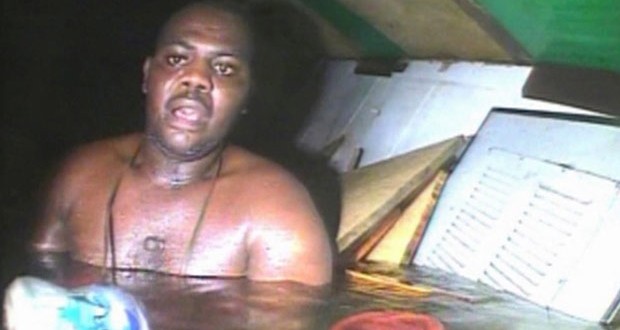Harrison Odjegba Okene had survived three days in a small air pocket inside an overturned tugboat at the bottom of the Atlantic Ocean before he was rescued at the last moment by a diver – but the lucky 29-year-old says he will not be tempting fate again.
In an exclusive interview with The Associated Press, Okene described his miraculous rescue that was videotaped and which went viral after it was uploaded on the Internet this month.
Okene’s story is that he eventually made his way to the engineer’s office, where he found a small pocket of air. By this time, the boat had come to rest upside down 30 meters (100 feet) underwater on the sea floor. Almost naked, and with nothing but a bottle of Coke, Okene appeared doomed to die a slow death. Alone and terrified, Okene said he could hear what he believed were the sounds of sharks devouring the bodies of his crewmates.
Divers from a neighboring oil-rig were sent to the scene. This was not a rescue operation, and four bodies had already been pulled out of the wreck. Miraculously, however, they found Okene alive. In the YouTube video showing his rescue, one of the divers sees and reaches for the hand of what he believes is a body floating in the cold murky water. To his shock, almost as out of a horror movie, the hand moves and grabs him. Shock and fear eventually give way to joy as the diver says, “He’s alive!” How did Okene survive trapped in a cramped room underwater for sixty hours? Can science explain his miraculous survival or is there more to this story?
Okene’s Survival as a Science Problem
Air is made of mostly nitrogen (78.084%) and oxygen (20.946%) with trace amounts of carbon dioxide (0.0314%). As a person exhales, this percentage changes; oxygen falls between 16-17% and while carbon dioxide rises somewhere between 4-5%.
As a result, a person trapped in an enclosed room faces a major problem. From the first breath, the concentration of carbon dioxide will quickly rise and become toxic. Depending on the size of the room, a person could asphyxiate in a matter of hours. Remarkably, Okene managed to survive in a small room for over two days. How exactly did he do this?
As the boat sank and turned over, the trapped air pocket acted as a diving bell; a type of chamber that is open at the bottom where the pressure of the water keeps air trapped inside the bell. This air bubble could have played a role in Okene’s survival. To understand how this took place, we must understand the master of this device, the diving bell spider.
AP/Canadajournal
 Canada Journal – News of the World Articles and videos to bring you the biggest Canadian news stories from across the country every day
Canada Journal – News of the World Articles and videos to bring you the biggest Canadian news stories from across the country every day



